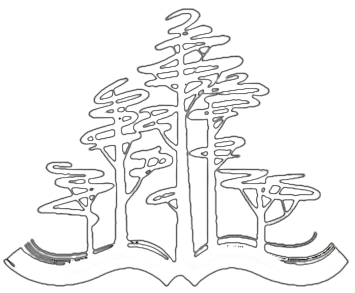Summer School on the Russian Literature. 2019.
Vol. 15. № 2-3
While writing articles about Theophile Gautier, Nikolai Gumilev used a book, written by E. Bergerat, the French poet’s son-in-law. Gumilev borrowed interesting facts and quotes and edited the text to create the image of Gautier as a conqueror, full of courage and joie de vivre.
Keywords: Nikolai Gumilev, Theophile Gautier, source, memoirs, biography.
Keywords: Nikolai Gumilev, Theophile Gautier, source, memoirs, biography.
Katerina Bryleva
The memoirs of the son-in-law
One of Nikolai Gumilev’s sources of knowledge about T. Gautier
One of Nikolai Gumilev’s sources of knowledge about T. Gautier
The present article analyzes the mysterious story about Esenin’s „last will and testament,“ published in an American Sunday newspaper in 1926 The author shows that this publication, which has been quoted by a number of Esenin scholars, was the first part of a cycle of fantastic mystifications published in The American Weekly magazine in the 1920-1940s, which dealt with the extraordinary adventures of an „Etruscan vase“ with Esenin’s and Isadora Duncan’s ashes. The author attributes this cycle to an American journalist and compulsive faker Ivan Ivanovich Narodny-Sibul (1869–1953), once labeled by the FBI as „the worst fraud that ever came out of Russia“ to the United States. The article reconstructs the biography and „creative career“ of this compulsive mystifier.
Keywords: Sergei Esenin, Isadora Ducan, biographical myth, Russian and American ballet, mystifications, Ivan Ivanovitch Narodny.
Keywords: Sergei Esenin, Isadora Ducan, biographical myth, Russian and American ballet, mystifications, Ivan Ivanovitch Narodny.
Ilya Vinitsky
Sergei Esenin’s „Last Will and Testament“
The Origins of a Mystification
The Origins of a Mystification
Zholkovsky revisits his recent analyses of three very different literary texts — Ivan Bunin’s „Dark alleys,“ Veniamin Kaverin’s „The Two Captains“ and Mikhail Zoshchenko’s „Personal Life“ — to discover interesting similarities. One is that it had taken him so long to figure out the elusive secret of the texts’ respective structural dominants (which now seem indisputable). The other, much more unexpected similarity is that the three texts share an important feature: an „authorial“ motif built into the patently disparate narratives. The last part of the essay is devoted to formulating the theoretical conclusions of the observed analogies.
Keywords: I. A. Bunin, V. A. Kaverin, M. M. Zoshchenko, M. M. Bakhtin, Yu. K. Shcheglov, structure, theme, authorship, scripting, secret, dominant, strategy, poetics of expressiveness.
Keywords: I. A. Bunin, V. A. Kaverin, M. M. Zoshchenko, M. M. Bakhtin, Yu. K. Shcheglov, structure, theme, authorship, scripting, secret, dominant, strategy, poetics of expressiveness.
Alexander Zholkovsky
Analyzing Three Analyses
Autoheuristic Notes
Autoheuristic Notes
The article investigates on some texts in Daniel Kharms’s notebooks of the 1925–1927, relating to cinema. The commentary allows to clarify the poet’s interests in the field of cinema, and some details of his biography as well.
Keywords: Daniel Kharms, OBERIU, notebooks, cinema.
Keywords: Daniel Kharms, OBERIU, notebooks, cinema.
Alexander Kobrinsky
Daniil Kharms as a moviegoer
Preliminary notes
Preliminary notes
The article is devoted to the appearance of the financial frauds topic that was actively developing in the dramaturgy of the second half of the 1870s. A. Ostrovsky’s comedy „Wolves and sheep“ is an example of the comedy where the dramatic conflict is tied to financial fraud. In the article the comedy „Wolves and Sheep“ is aimed to be compared with other plays of the 1870s, where economic crimes are reproduced on the scene. We will find out if there is a connection between the plot character and the formal scheme, which is built on the base of the quantitative analysis. Moreover, the paper is to show how the plays with a financial theme differ structurally from the plays with other dramatic conflicts.
Keywords: drama, quantitative analysis, quantitative characteristics, formal methods, plot, dramatic conflict, financial fraud.
Keywords: drama, quantitative analysis, quantitative characteristics, formal methods, plot, dramatic conflict, financial fraud.
Ekaterina Kolevatova
Financial fraud and dramatic conflict
Plot schemes and character functions in Russian drama in the second half of the 1870s
Plot schemes and character functions in Russian drama in the second half of the 1870s
The paper studies Nikolay Karamzin’s „Conversation Happiness“ (1797) in the context of the history of ideas. As possible sources the works of Alexander Pope, Charles Bonnet, Bernard de Fontenelle and Adam Smith are discussed.
Keywords: Nikolay Karamzin, history of ideas, literary connections between Russia and Europe, Adam Smith.
Keywords: Nikolay Karamzin, history of ideas, literary connections between Russia and Europe, Adam Smith.
Oleg Larionov
Towards the Sources of Nikolay Karamzin’s „Conversation on Happiness“
The article explains when and why „Taras Bulba“ by N. V. Gogol entered the Russian school canon. The canonical potential of the text is indicated relying on the anthologies and school curricula, and the circulation of two editions in school literature is showed. The complicated correlation of the versions of 1835 and 1842 is explained by the nationalist charge of the story.
Keywords: literary canon, Taras Bulba, school curricula, N. V. Gogol.
Keywords: literary canon, Taras Bulba, school curricula, N. V. Gogol.
Andrey Lyustrov
N. V. Gogol’s „Taras Bulba“
Two versions in the Russian school canon
Two versions in the Russian school canon
The article observes Russian translations of the XVII–XVIII centuries containing information about Greenland and the Greenlanders: the part of the manuscript from the K. I. Nevostruev’s collection and L. Holberg’s fable „On the Greenlander“ translated by D. I. Fonvizin. It is argued that the image of Greenland and Greenland was formed despite the indifference of Russian authors to the Arctic theme in XVII–XVIII centuries.
Keywords: L. Holberg, Russian literature of the XVII–XVIII centuries, Greenland.
Keywords: L. Holberg, Russian literature of the XVII–XVIII centuries, Greenland.
Mikhail Ljustrov
Greenland Theme in the 17–18th Centuries Russian Literature
The article is devoted to the identification of the semantics of the concept of victim and the formation of its topos in the Old Russian literature of the 11th–14th centuries. The study is based on the material of multi-genre works, the result of the analysis of linguistic data and imagery is a description of the conflict in the literature between the sinful „external“ victim and salvific „internal“ sacrifice. In particular, the article considers the specifics of the figurative embodiment of the victim in the literary monuments of the Boris and Gleb’s cycle. The author notes the peculiarity of poetics, which consists in using the „ritualization“ of the literary language to describe the sacrificial feat, which indicates the stage of transition leading to a further change in the semantic content of the topos of victim.
Keywords: victim, topos of victim, sacrifice, history of concepts, poetics of Old Russian literature, Boris and Gleb’s cycle.
Keywords: victim, topos of victim, sacrifice, history of concepts, poetics of Old Russian literature, Boris and Gleb’s cycle.
Alexey Popovich
Victim „Living“ and „Dead“
A Topos and the Contradiction of Context in the Books of Ancient Russia of 11th–14th Centuries
A Topos and the Contradiction of Context in the Books of Ancient Russia of 11th–14th Centuries
The article is devoted to the analysis (on the material of Anton Chehkov’s short stories) of the appearance of description of diseased protagonist’s esthesia. We highlight the distinctive meanings’ definition, that enriches and transforms the basic literary situation and exaggerates the narrative structure.
Keywords: narrative, A. P. Chekhov, literary process.
Keywords: narrative, A. P. Chekhov, literary process.
Alina Solomonova
Artistic Peculiarities of Representation an Ill Character’s Esthesia and Consciousness
(By the Example of the Works of Anton Chekhov)
(By the Example of the Works of Anton Chekhov)
The article is devoted to the E. Zamjatin’s filmscript „The Queen of Spades“, which contains key details and plot techniques from several works of Russian art. The writer attempted to translate Russian culture to the foreign audience through his own cinematic adaptation of the story. The article shows, how Zamjatin created a scenario, imposing well-known shots from the works of Tchaikovsky and Dostoevsky on an unfamiliar „Pushkin’s“ film.
Keywords: „The Queen of Spades“, E. I. Zamjatin, A. S. Pushkin, P. I. Tchaikovsky, F. M. Dostoevsky, cinematograph, scenario.
Keywords: „The Queen of Spades“, E. I. Zamjatin, A. S. Pushkin, P. I. Tchaikovsky, F. M. Dostoevsky, cinematograph, scenario.
Ekaterina Tarasova
What is Evgenij Zamjatin’s „The Queen of Spades“ made of?
The paper discusses the autodidact writers’ self-determination strategies in the literary process of the beginning of 20th century, i. e. constructing endonyms, which revealed their origin specificity and the difference between them and writers „in common sense“, invention of their own hierarchy of classics, and reflection on poetics.
Keywords: writer from the common people, literary tradition, succession, classic writer, self-presentation.
Keywords: writer from the common people, literary tradition, succession, classic writer, self-presentation.
Oxana Tolstonozhenko
Towards the Invention of Professional Identity of Early 20th Century Autodidact Writers
In this article I tried to justify the relevance of biblical subtext in the story „Hours of Life and Death“ by Mikhail Bulgakov, which was published on the occasion of Lenin’s death. The analysis of symbolic level of this text allows to make a conclusion about its influence on the common pathos of Bulgakov’s story and to characterize its functioning in the context of another simultaneous works, which are dedicated to Lenin’s death.
Keywords: M. A. Bulgakov, V. I. Lenin, biblical subtext, Soviet literature
Keywords: M. A. Bulgakov, V. I. Lenin, biblical subtext, Soviet literature
Anastasia Trushina
The function of biblical subtext in The Story „Hours of Life and Death“ by Mikhail Bulgakov
Contacts
summerschool@list.ru
В оформлении сайта использованы материалы Freepik.


